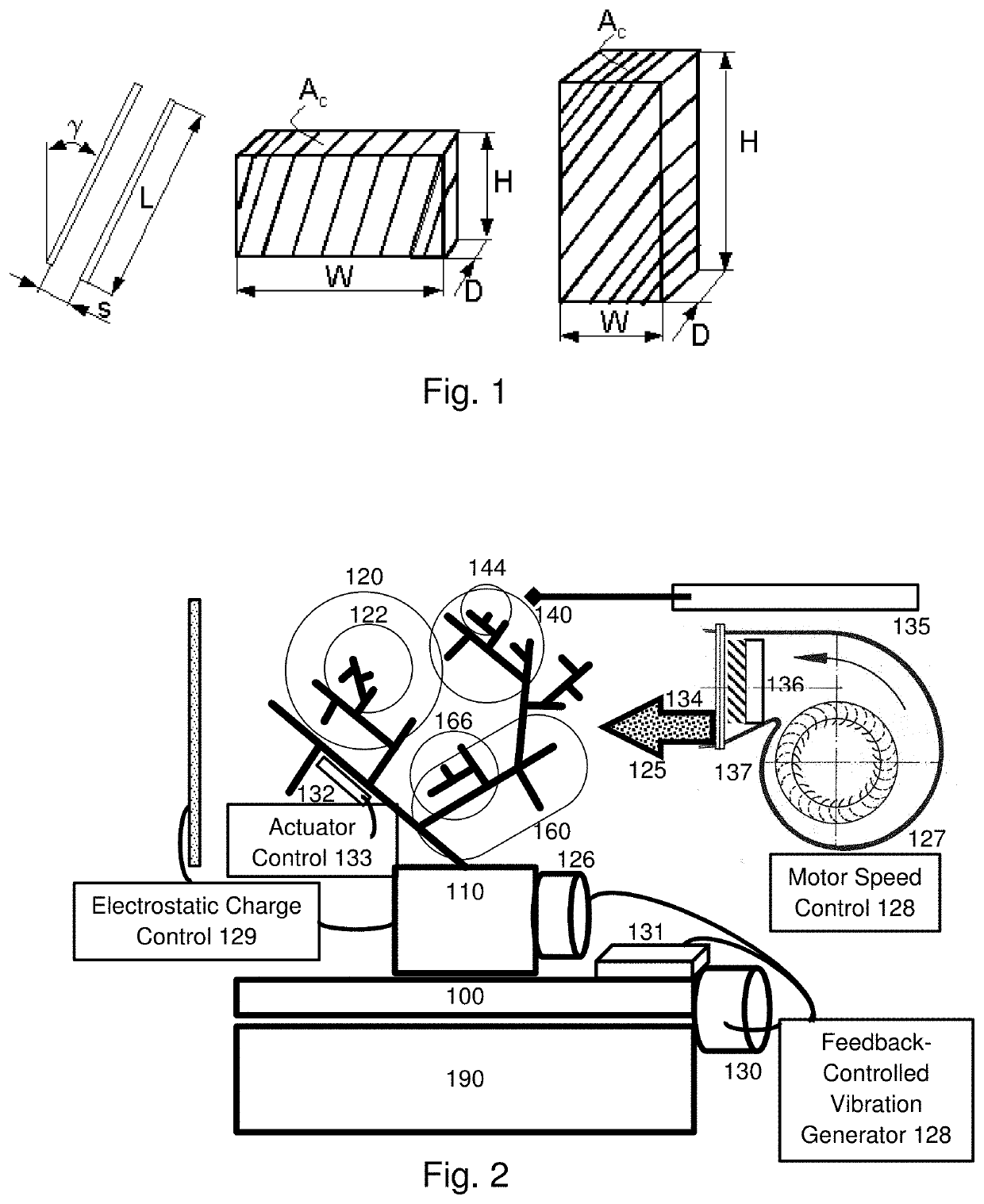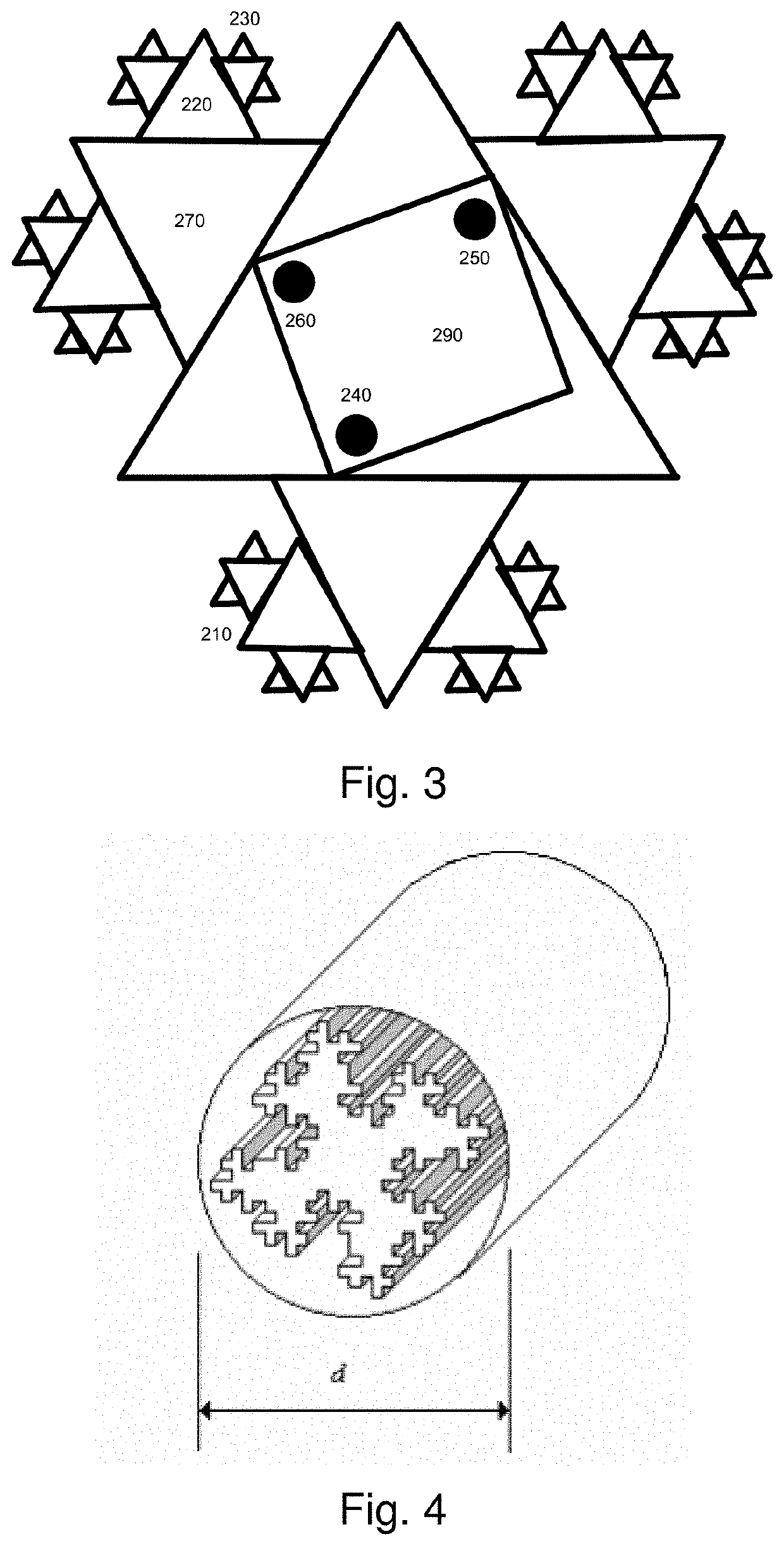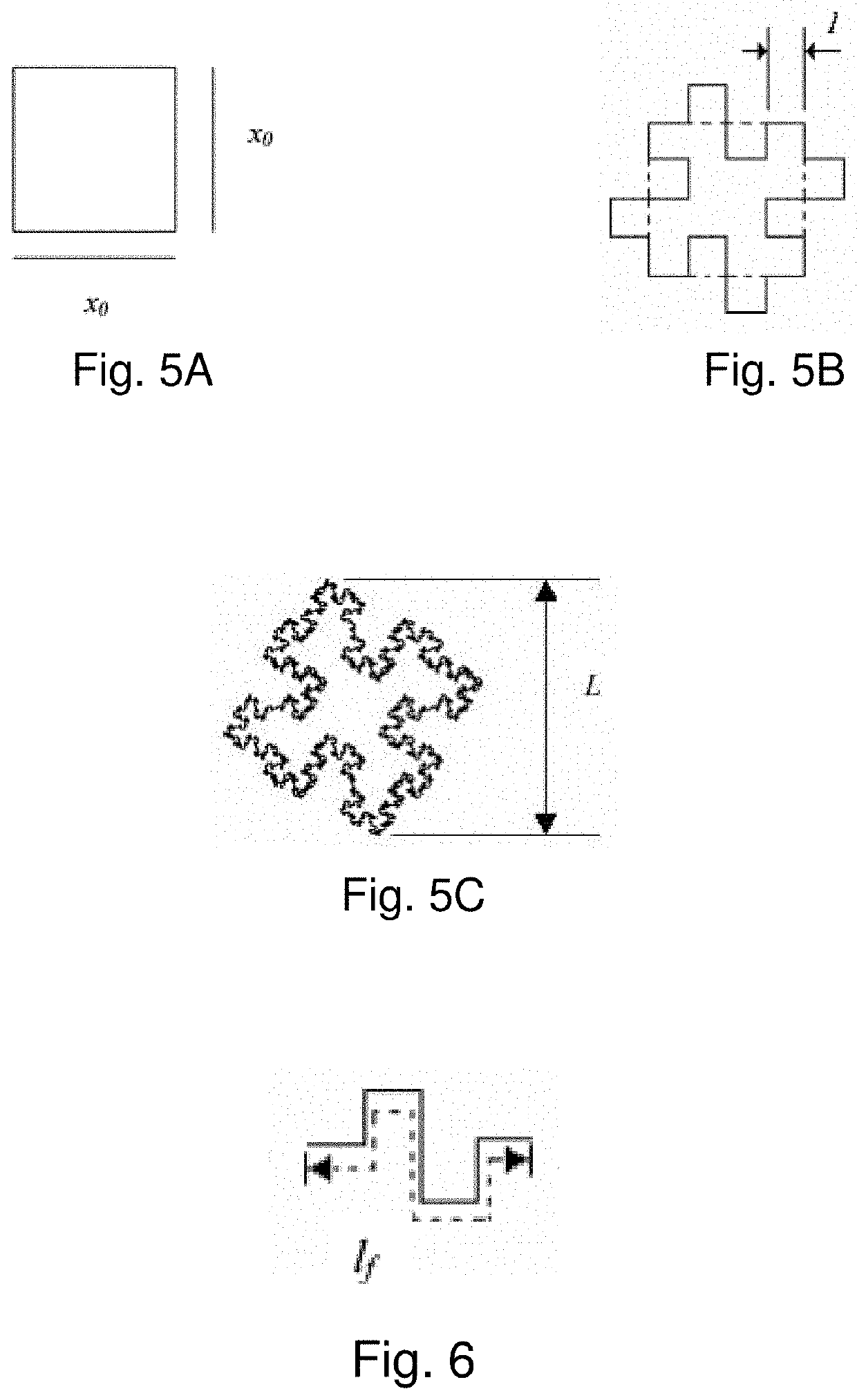System and method for maintaining efficiency of a fractal heat sink
a technology of fractal heat sink and efficiency, which is applied in the field of heat sinks, can solve the problems of high temperature, dust or its binder pyrolysis, and strain in the dust layer,
- Summary
- Abstract
- Description
- Claims
- Application Information
AI Technical Summary
Benefits of technology
Problems solved by technology
Method used
Image
Examples
Embodiment Construction
s="d_n">[0185]FIG. 2 illustrates a heatsink implementing a first embodiment of this invention. Note that the illustration is in two dimensions, but a three dimensional embodiment is both possible and preferred. There is a heat transfer surface 100 that allows the heatsink to rest comfortably on a surface, such as the solid to be cooled 190. In the illustrated embodiment, the heat transfer surface 100 is roughly planar, having a closed Euclidian cross-section on the bottom. However, it might also have another shape, for example if the solid to be cooled does not have a planar face. The heat transfer surface may also comprise an anisotropic vibration transfer thermal interface material, such as a braided or straight fine copper wire bundle. Such a bundle advantageously has strands of different length, which, for example, could permit destructive interference of vibrations transmitted along each strand. A fractal-shaped heat exchange device begins at point 110. The base of the fractal-...
PUM
 Login to View More
Login to View More Abstract
Description
Claims
Application Information
 Login to View More
Login to View More - R&D
- Intellectual Property
- Life Sciences
- Materials
- Tech Scout
- Unparalleled Data Quality
- Higher Quality Content
- 60% Fewer Hallucinations
Browse by: Latest US Patents, China's latest patents, Technical Efficacy Thesaurus, Application Domain, Technology Topic, Popular Technical Reports.
© 2025 PatSnap. All rights reserved.Legal|Privacy policy|Modern Slavery Act Transparency Statement|Sitemap|About US| Contact US: help@patsnap.com



